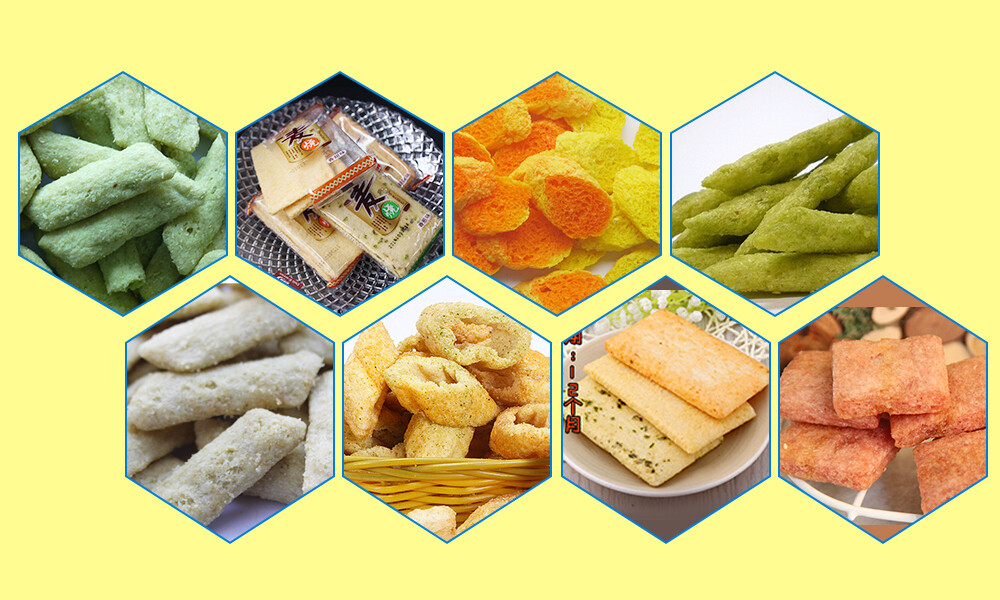Discovering The World Of mini corn puff machine
How Mini Corn Puff Machines Work
To fully appreciate the magic of transforming corn kernels into crispy, airy puffs, it’s essential to understand the intricate mechanics of a mini corn puff machine. These machines are marvels of engineering, combining precision temperature control, pressure dynamics, and shear force to achieve the perfect puff. Let’s break down the process step-by-step.
1. Kernel Preparation
The journey begins with raw corn kernels, which are meticulously cleaned and conditioned to remove moisture and impurities. High-quality kernels ensure consistent puffing, as moisture content directly impacts the expansion ratio and texture of the final product. Once prepared, the kernels are fed into the machine’s hopper, ready for the transformation.
2. Extrusion and Puffing
At the heart of the mini corn puff machinelies the extrusion chamber—a high-pressure, high-temperature environment where the magic happens. As kernels enter this chamber, they are subjected to intense heat (typically between 180°C and 220°C) and pressure (up to 500 psi). This combination causes the starches in the corn to gelatinize, while the moisture inside the kernels rapidly vaporizes, creating steam. The steam, trapped within the gelatinized starch matrix, expands the kernels into a porous, puffed structure.
The key to achieving the ideal puff lies in the machine’s ability to precisely control these variables. Overheating can lead to charring, while insufficient pressure may result in incomplete expansion. Modern mini corn puff machines are equipped with advanced sensors and automated controls to maintain optimal conditions, ensuring uniformity and quality.
3. Shaping and Cutting
Once puffed, the extrudate is passed through a shaping die, which determines the final form of the puffs—whether round, cylindrical, or custom-shaped. The machine then cuts the extrudate into precise, bite-sized pieces using rotary blades or similar mechanisms. This step is critical for both aesthetic appeal and packaging efficiency.
4. Cooling and Drying
Freshly puffed corn is still moist and prone to clumping. To address this, the puffs are rapidly cooled and dried using a combination of airflow and heat exchange. This process stabilizes the texture, reduces moisture content to below 5%, and ensures a crispy, shelf-stable product.
5. Flavoring and Packaging
The final stage involves flavoring, where the puffs are coated with seasonings, oils, or sweeteners. This can be done via tumbling drums, fluidized beds, or spray systems, depending on the desired flavor profile. Once flavored, the puffs are packaged into bags, boxes, or multipacks, ready for distribution.
Innovations in Mini Corn Puff Machinery
Recent advancements in mini corn puff machine technology have focused on sustainability and efficiency. For instance, some models now incorporate energy-efficient heating systems and recyclable materials, reducing their environmental footprint. Others feature modular designs, allowing manufacturers to swap components for different puff shapes or sizes.

Types of Mini Corn Puff Machines
The world of mini corn puff machines is as diverse as the snacks they produce. These machines vary in design, capacity, and functionality to cater to the unique needs of manufacturers, from small-scale artisans to global snack food giants. Understanding the different types of mini corn puff machines is crucial for selecting the right equipment to achieve optimal production efficiency and product quality. Let’s explore the primary categories.
Single-Screw Extruders | Single-screw extruders are the most common type of mini corn puff machine, favored for their simplicity and versatility. These machines use a single rotating screw to convey, compress, and heat corn kernels as they move through the barrel. The high pressure and temperature generated by the screw cause the kernels to puff upon exiting the die. Single-screw extruders are ideal for producing traditional corn puffs, such as cheese balls or crunchy corn curls, and are well-suited for low- to medium-volume production. |
Twin-Screw Extruders | For manufacturers seeking higher precision and flexibility, twin-screw extruders offer advanced capabilities. These machines feature two intermeshing screws that provide superior mixing and shear forces, enabling better control over the puffing process. Twin-screw extruders excel at processing complex recipes, such as multigrain puffs or those requiring precise inclusion of additives (e.g., vitamins, minerals, or flavorings). Their higher throughput makes them suitable for medium- to high-volume production lines. |
Batch vs. Continuous Systems | Mini corn puff machines can also be categorized based on their operational mode: 1.Batch Systems: These machines produce puffs in discrete batches, offering greater control over recipe formulation and product consistency. Batch systems are ideal for small-scale operations or when frequent recipe changes are required. 2.Continuous Systems: Designed for uninterrupted production, continuous machines maintain a steady flow of puffs, maximizing efficiency and output. These systems are preferred by large-scale manufacturers aiming to meet high demand while minimizing downtime. |
Automated vs. Manual Controls | The level of automation in a mini corn puff machine significantly impacts its usability and efficiency: 1.Automated Machines: Equipped with programmable logic controllers (PLCs) and human-machine interfaces (HMIs), these machines offer real-time monitoring, automated adjustments, and recipe storage. Automation reduces labor costs, minimizes human error, and ensures consistent product quality. 2.Manual Machines: While less sophisticated, manual systems remain popular in smaller operations or regions with limited access to advanced technology. These machines require operators to manually adjust parameters such as temperature, pressure, and screw speed, making them more labor-intensive but often more affordable. |
Specialty Machines for Unique Applications | Beyond conventional designs, some mini corn puff machines are tailored for specific applications: 1.Co-Extrusion Systems: These machines combine multiple layers of dough to create puffs with distinct textures or flavors (e.g., a crispy outer shell and a creamy center). 2.3D Shaping Machines: Leveraging advanced die technology, these systems produce puffs in intricate shapes, such as stars, rings, or animal figures, appealing to niche markets. 3.Organic or Gluten-Free Machines: Designed to meet stringent food safety standards, these machines use dedicated components to prevent cross-contamination, ensuring compliance with organic or gluten-free certifications. |
Benefits of Owning a Mini Corn Puff Machine
Operational Advantages for Snack Manufacturers
Investing in a mini corn puff machine delivers measurable improvements across production, quality control, and business growth metrics. These systems provide distinct competitive edges in today's snack food market.
1. Enhanced Production Economics
Modern mini corn puff machines optimize manufacturing costs through:
Energy Efficiency | Advanced extruders consume only 0.8-1.2 kWh per kg of output, reducing power costs by 25-40% versus conventional systems |
Labor Optimization | Automated models require just 0.5-1.5 labor hours per 100kg produced |
Material Yield | Precision extrusion achieves 96-98% raw material conversion rates |
Case studies show typical ROI periods of:
- 10-14 months for high-volume operations
- 16-22 months for artisanal producers
2. Unmatched Product Consistency
Industrial-grade mini corn puff machines maintain strict quality parameters:
Parameter | Tolerance Range | Measurement Method |
Piece Weight | ±1.2% | Automated checkweighers |
Moisture Content | ±0.3% | NIR sensors |
Expansion Ratio | ±2.5% | Volumetric scanning |
Color Uniformity | ΔE<1.5 | Spectrophotometry |
This level of consistency is unattainable with manual or semi-automated equipment.
3. Rapid Product Development
The modular design of contemporary mini corn puff machines enables:
Formula Testing | 5-15kg trial batches with full parameter control |
Quick Changeovers | <30 minutes for shape/size modifications |
Flavor Prototyping | 8-12 variants can be produced in one shift |
This agility allows manufacturers to:
- Capitalize on trending flavors 60% faster
- Test market response with minimal risk
- Optimize recipes before full-scale production
4. Sanitation and Compliance Benefits
Food-grade mini corn puff machines feature:
- Hygienic Design:
Radius corners (≥3mm) for cleanability
Quick-release components
Self-draining surfaces
- Certification Readiness:
Pre-validated for FSSC 22000, BRCGS
Material certificates for FDA/EU compliance
These features reduce:
- Sanitation downtime by 40-50%
- Micro testing failures by 75%
- Audit preparation time by 30 hours/month
5. Scalability and Future-Proofing
Smart investment in a mini corn puff machine provides growth pathways:
- Capacity Expansion:
Base models often allow 50-300% output increases
Modular add-ons (coating, packaging)
- Technology Upgrades:
IoT connectivity retrofits
AI-based optimization
Renewable energy integration
6. Market Differentiation Capabilities
Advanced machines enable production of:
- Functional Snacks:
Protein-enriched (up to 20g/100g)
Vitamin-fortified
Prebiotic-containing
- Sustainable Options:
Upcycled ingredient utilization
Reduced-carbon footprint products
Plastic-free packaging compatibility
For snack businesses, owning a mini corn puff machine translates to:
- 15-25% higher wholesale margins
- 2-3x faster customer acquisition
- 40-60% better retail shelf placement

Advanced Materials and Design in Mini Corn Puff Machines
In the pursuit of more efficient and durable mini corn puff machines, the use of advanced materials and innovative design principles is becoming increasingly prevalent.
From a materials perspective, the development of high - temperature resistant polymers is a game - changer. Traditional metal components in the puffing chamber and extrusion system are susceptible to wear and corrosion, especially when exposed to the high temperatures and pressures required for puffing corn kernels. Advanced polymers, such as polyether ether ketone (PEEK), offer superior thermal stability, chemical resistance, and low friction properties. By incorporating these polymers into critical machine parts, manufacturers can significantly extend the service life of the equipment and reduce maintenance costs.
Another material innovation is the use of nanocomposites. These materials combine the properties of different nanoparticles, such as carbon nanotubes or graphene, with a polymer matrix. Nanocomposite coatings can be applied to the inner surfaces of the puffing chamber to improve heat transfer and reduce the adhesion of corn particles. This results in a more efficient puffing process and easier cleaning of the machine.
In terms of design, modularization is a key trend in mini corn puff machine technology. Modular machines allow for easy customization and scalability. Manufacturers can offer different modules that can be combined to create a machine tailored to specific production requirements. For example, a basic puffing module can be paired with additional modules for flavoring, coating, or packaging, depending on the customer's needs. This modular approach also simplifies maintenance and repair, as individual modules can be easily replaced without affecting the rest of the machine.
The design of the puffing chamber itself is also undergoing significant changes. Researchers are exploring new geometries and surface textures to optimize the expansion of corn kernels. For instance, a spiral - shaped puffing chamber can create a more uniform flow of steam and pressure, resulting in a more consistent puff size and texture. Additionally, textured surfaces can help to break up the corn kernels more effectively, leading to better expansion and a lighter, crispier product.
Furthermore, the integration of human - machine interface (HMI) design principles is improving the usability of mini corn puff machines. Modern HMIs feature intuitive touchscreens and graphical user interfaces that allow operators to easily monitor and control the machine's parameters. Advanced HMIs can also provide real - time feedback on production performance, quality metrics, and maintenance alerts, enabling operators to make informed decisions and take proactive measures to optimize the production process.
In conclusion, the use of advanced materials and innovative design principles is driving the evolution of mini corn puff machines. These advancements not only improve the performance and reliability of the equipment but also offer greater flexibility and usability for manufacturers, ultimately leading to higher - quality corn puff products for consumers.

Reference
The following are five authoritative foreign literature websites in the field of Industrial food machinery:
1. Food Engineering Magazine
Website: https://www.foodengineeringmag.com/
2.Food Processing Magazine
Website: https://www.foodprocessing.com/
3.Journal of Food Engineering
Website:https://www.journals.elsevier.com/journal-of-food-engineering
4. Food Manufacturing Magazine
Website:https://www.foodmanufacturing.com/
5. International Journal of Food Science & Technology
Website:https://www.foodmanufacturing.com/https://www.foodmanufacturing.com/












